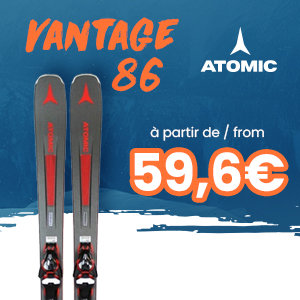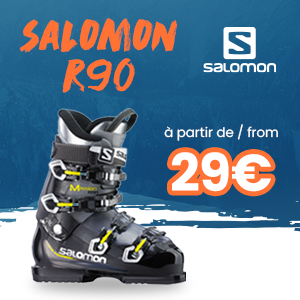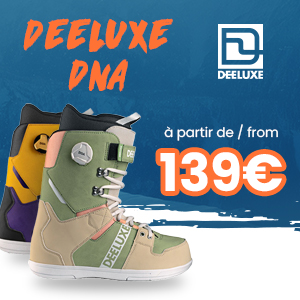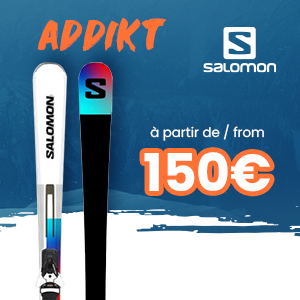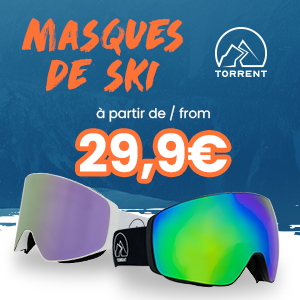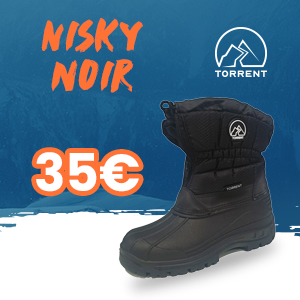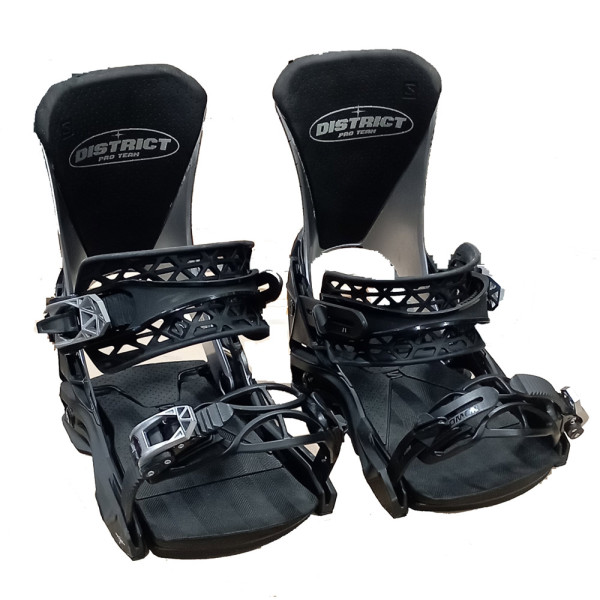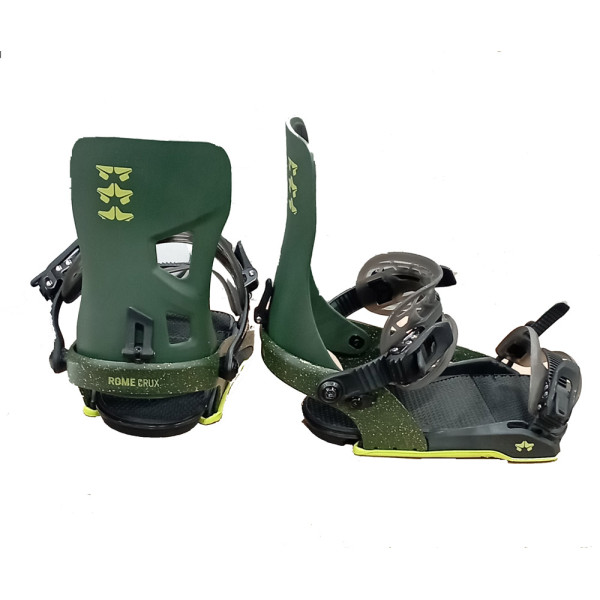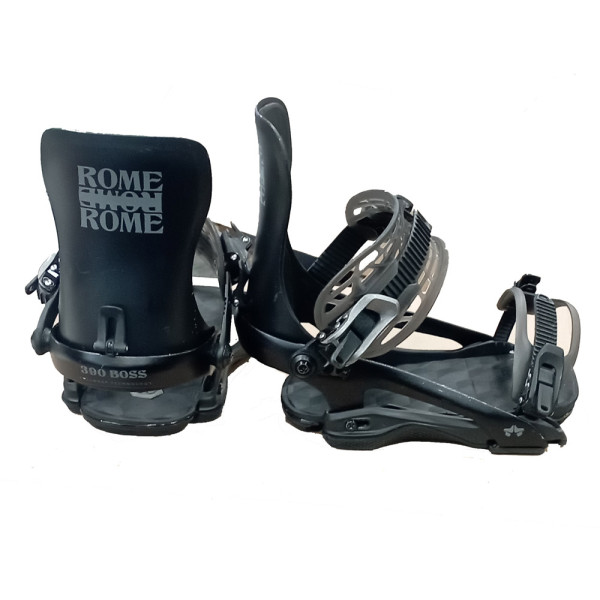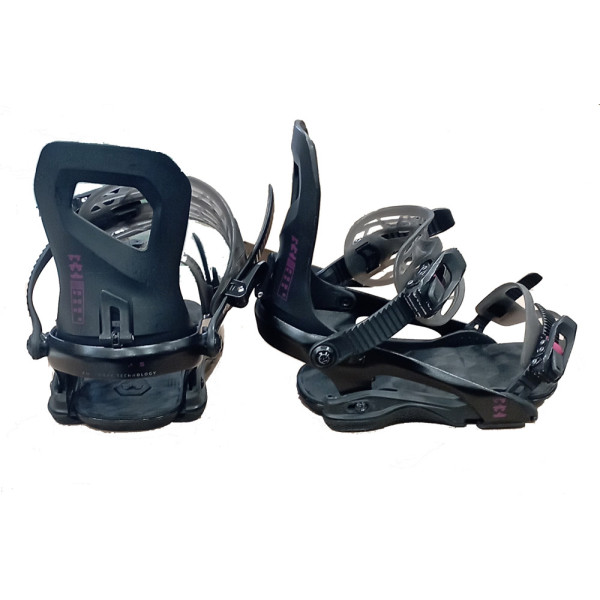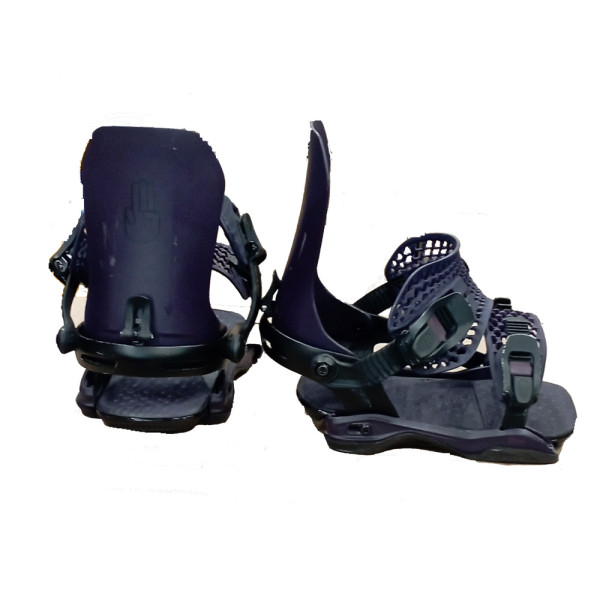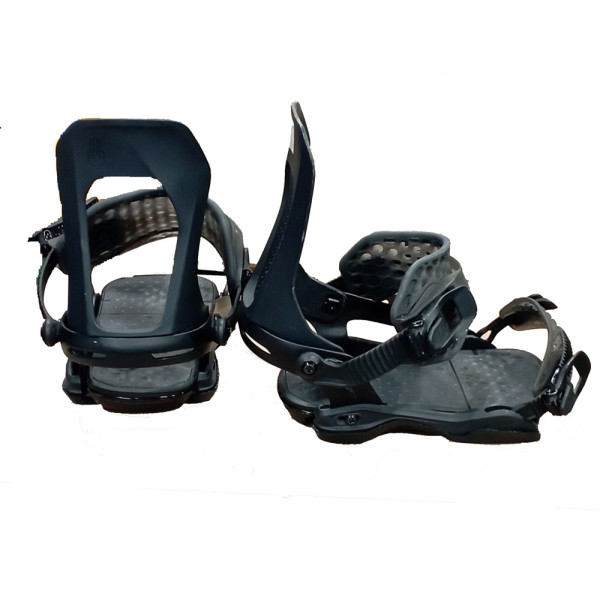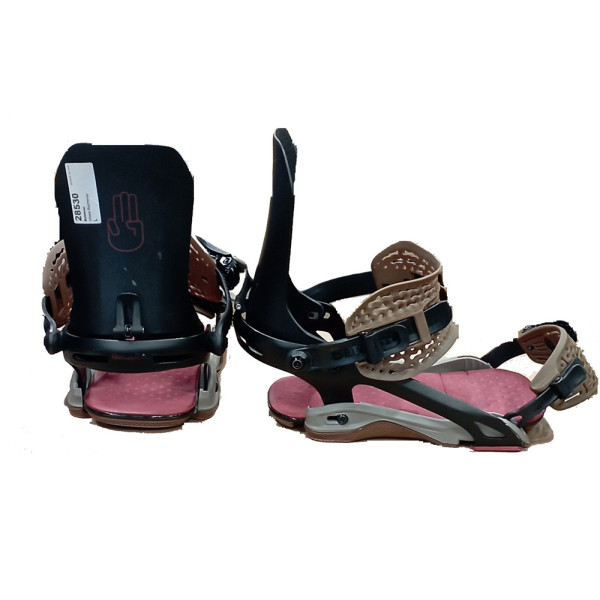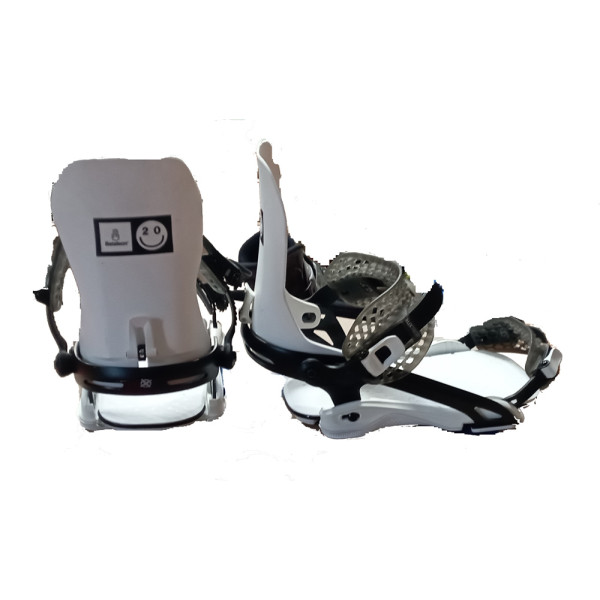Snowboard Bindings
The perfect snowboard gear is the one that makes you forget the world around you as you hit the slopes. And believe it or not, snowboard bindings play a major role in this quest for winter escape. So, how can you make sure you're making the right choice? Follow the guide!
Importance of Bindings in Your Snowboard Equipment
Bindings are the guardians of the sacred connection between you and your snowboard. They transmit your movements to the board and ensure that you remain attached to your faithful riding companion, unless you need to quickly release to avoid injury. In short, choosing the wrong pair of bindings could turn an epic descent into a struggle for control. They're a bit like the cheese in a raclette: without them, it simply wouldn't work !
How to choose your snowboard bindings?
Choosing the right bindings is a bit like finding the right shoe for your feet, but for feet snuggled up in snowboard boots. Here's what to consider:
- Flexibility: Bindings come with different flex levels. A soft flex is ideal for beginners or freestyle enthusiasts, as it offers more forgiveness and comfort. A stiff flex, on the other hand, offers more precision and is preferred by freeride riders and those who love speed.
- Features: Some bindings offer additional adjustments that can improve comfort and performance, such as adjustable spoiler tilts or advanced cushioning systems.
- Ease of Use: Look for bindings that are easy to operate, especially if you plan on doing a lot of backcountry hiking where you'll need to frequently put on and take off your bindings.
Compatibility with your snowboard and boots
The relationship between your bindings, snowboard, and boots should be harmonious. Make sure the bindings you choose fit the width of your snowboard properly and that the straps or entry system are compatible with your boots. Misalignment in this three-way relationship can lead to uncomfortable pressure points or loss of control on the board.
Snowboarding Style and Personal Preferences
Your personal snowboarding style greatly influences the type of bindings that will suit you best:
- Freestyle: If you're the type to spend your time in the snow park, bindings with a softer flex will give you the freedom of movement you need for tricks and soft landings.
- All-mountain: For those who like to do it all, bindings with an intermediate flexibility offer a good balance between control and comfort, no matter the terrain.
- Freeride: Fans of fast descents and deep powder will benefit from stiffer bindings for better power transmission and precise control.
Choosing the right snowboard bindings is a blend of art and science, where compatibility, style, and personal preference collide. Take the time to think about what matters most to you on the slopes, and you'll find the bindings that will turn every ride into an unforgettable experience.
The different types of snowboard bindings
Choosing the right bindings is essential for an optimal snowboarding experience. Like the boards themselves, bindings vary depending on the rider's style and preference. Here's an overview of the main types available on the market.
Standard fasteners
Standard bindings are the most common type of snowboard binding. They feature two straps: one at the toe and the other around the ankle, providing a secure and customizable fit. This type of binding allows for excellent power transmission from the rider to the board, which is crucial for control in various snow conditions. Standard bindings are valued for their versatility, suitable for a wide range of snowboarding styles, from freestyle to freeride. Their main advantage lies in their ability to be precisely adjusted, allowing riders to find the perfect balance between comfort and responsiveness.
Rear entry fasteners
Rear-entry bindings, also known as back-tilt bindings, offer a unique approach to securing boots to the board. Instead of traditional straps, they feature a highback (rear spoiler) that swings back, allowing the rider to insert their foot from the back. Once the foot is in place, the highback swings back into position, securing the boot. This system allows riders to quickly get in and out of gear, which is especially valuable when spending a lot of time on lifts or in the backcountry. While less common than standard bindings, rear-entry bindings offer superior comfort and convenience for riders who prioritize ease of use.
Quick fasteners
Quick-release bindings are designed to maximize convenience and reduce the time required to attach to the board. They use various mechanisms, such as ratchets or locking systems, allowing riders to attach their boots quickly and often with one hand. This category may include brand-specific technologies that seek to simplify the process without compromising safety or performance. Quick-release bindings are ideal for snowboarders looking to minimize the time spent adjusting their equipment, allowing them to spend more time riding. While convenient, it's important to ensure these bindings still offer a level of support and control comparable to more traditional systems.
Select bindings based on the snowboarder
Snowboard binding selection should be tailored to each rider's skill level and specific needs. Whether you're a beginner on the slopes, an intermediate rider looking to improve your skills, or an expert looking for performance, choosing the right bindings can transform your experience on the snow.
Bindings for beginners
For those new to snowboarding, beginner bindings are designed to provide the greatest comfort and forgiveness possible. These bindings typically have a softer flex, which allows for some margin for error and makes learning the basics easier. The softer flex also helps absorb shock and reduces fatigue, allowing you to spend more time on the slopes without feeling overworked.
Features to look for include padded straps and highbacks for added comfort, as well as simple closure systems that don't require struggling to adjust on the slopes. Ease of use is key, allowing beginners to focus on improving their technique rather than the equipment.
Bindings for intermediate to advanced snowboarders
Intermediate to advanced riders require bindings that offer greater control and precision to explore a variety of terrain and snowboarding styles, from freestyle to freeride. These bindings typically have a medium to stiff flex, providing a more direct response and better power transmission to the edges of the snowboard.
For riders looking to hone their skills and venture into more demanding terrain, bindings with adjustable features, such as highback angle or strap positioning, can provide advanced customization to accommodate different riding conditions and preferences. High-quality materials and robust construction are also important to withstand the rigors of intensive use.
Specific bindings for women and children
Women's and children's specific bindings are designed to accommodate the anatomical differences and needs of these groups of riders. Women's bindings are often designed with a shorter highback and narrower base to accommodate smaller boots and a different center of gravity. They also offer a flex that better matches the average weight and strength of women, ensuring an optimal balance between control and comfort.
For children, safety and ease of use are paramount. Kids' bindings are lightweight, with simple locking mechanisms that allow young riders to put on and take off their bindings without assistance. A softer flex also helps facilitate turning and reduces fatigue, making learning more enjoyable and safer.
Best Practices for Fastener Maintenance
To ensure your snowboarding sessions remain safe and enjoyable, proper maintenance of your bindings is essential. Bindings are subjected to harsh conditions on the slopes, and without proper care, they can wear out prematurely or, worse, fail at the most inopportune moment. Here's how to keep your bindings in top condition.
Regular maintenance for extended life
- Cleaning after use: After each outing, take the time to clean your bindings to remove accumulated snow, ice, and dirt. A simple rinse with fresh water may be sufficient, but be sure to dry the bindings completely before storing them.
- Component Check: Regularly inspect all parts of your bindings, including straps, buckles, and screws. Look for signs of wear, cracks, or any damage that could compromise safety or performance. Tighten any loose screws (but be careful not to overtighten) and replace damaged parts if necessary.
- Lubrication: Pivot points and closing mechanisms can benefit from light lubrication to maintain smooth operation. Use a lubricant suitable for cold conditions and ensure it does not freeze at low temperatures.
- Proper Storage: At the end of the season, store your bindings in a cool, dry place. Avoid leaving them compressed under weight, which could distort the straps or highbacks.
- Professional Consultation: If you are unsure about the condition of your bindings or how to maintain them, don't hesitate to consult a professional. Regular maintenance by an expert can help identify potential problems before they become serious.
When should you replace your bindings ?
Despite careful maintenance, all bindings have a limited lifespan and must be replaced at some point to ensure your safety. Here are some signs that it's time to look for a new pair:
- Visible Wear: If your binding components show signs of extreme wear, such as significant cracks, frayed straps, or broken buckles, it's time to replace them.
- Performance Issues: If you begin to notice that your bindings are no longer holding your boot as firmly as they used to, or if the closure system is becoming difficult to use, this may indicate internal wear that requires replacement.
- Changes in your riding style: If your bindings no longer match your current snowboarding style or skill level, investing in a new set that better suits your needs can significantly improve your experience on the slopes.
- Outdated Technology: Binding technology is constantly evolving. If your bindings are significantly outdated, you may benefit from advances in comfort, performance, and safety by upgrading to a newer model.
Snowboard Binding FAQs
Navigating the world of snowboarding means having the right equipment, and bindings play a crucial role in that quest. Here are answers to some of the most frequently asked questions about snowboard binding maintenance and adjustment.
How do you know if a binding is still functional ?
Ensuring your bindings are in good working order is essential for your safety on the slopes. Here are some signs to look for to assess their functionality:
- Visual Inspection: Examine your bindings for cracks, breaks, or excessive wear on the straps and buckles. Visible damage may indicate that the bindings are no longer secure.
- Checking the mechanisms: Test the straps and ratchets to ensure they adjust and release properly. The mechanisms should operate smoothly.
- Stability: Make sure the bindings are securely attached to the board and that there is no excessive play between the bindings and the snowboard. An unstable binding can compromise your control over the board.
- Answer: When you're on your board, the bindings should respond precisely to your movements. If you notice a delay or a floating feeling, there could be a problem.
If you have any doubts about the condition of your bindings after these checks, it is advisable to have them examined by a professional.
Can you adjust your snowboard bindings yourself ?
Adjusting your bindings is not only possible but also recommended to optimize your snowboarding experience. Here are some tips for a successful adjustment:
- Positioning: Make sure your bindings are centered on the board at an angle that suits your riding style. Freestyle riders often prefer a more centered position, while freeride enthusiasts may opt for a more rearward position.
- Binding angle: Adjust the angle of your bindings to suit your riding style. A common setup is the "duck stance," with the front binding angled slightly forward and the rear binding angled rearward, providing a good balance for freestyle and switch riding.
- Strap Adjustment: The straps should be adjusted so they fit comfortably over your boots without pressure points. The toe straps should align with the end of your boots, while the ankle straps should wrap tightly around the ankle.
- Flex Check: The flex of your bindings should match your skill level and snowboarding style. A softer flex is more forgiving for beginners, while a stiffer flex offers more responsiveness for advanced riders.
With the tips and best practices shared here, you're now better equipped to make informed choices, maintain your gear, and fully enjoy your adventures on the slopes. Remember, the right gear is the key to a successful and enjoyable snowboarding experience.
And if you are looking forsnowboardsWe invite you to find out about ourboots and ourboards. Have a good ride!
